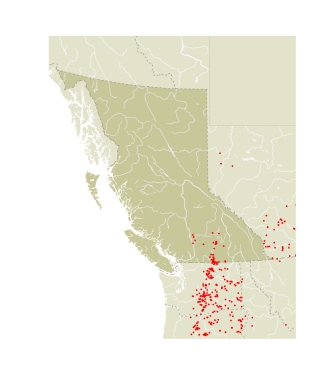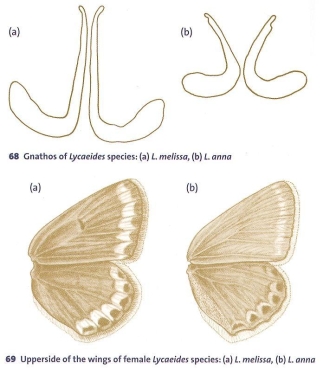AdultSee the discussion of the Northern Blue to distinguish Melissa's Blue. The male genitalia are illustrated. The underside wing ground pattern is always contrasting in Melissa's Blue. If one looks at large numbers of individuals of an adjacent Northern Blue population, there are always some individuals with a washed out wing pattern among the Northern Blues.
Immature StagesScudder (1889b) described the immatures as a subspecies of the Northern Blue. Comstock (1928) illustrated the egg of California populations. It is very flat and light green. Comstock (1929) illustrated the larva and pupa.
SubspeciesBC populations are the nominate subspecies, L.m. melissa (TL: La Plata Peak, Lake Co., CO).

